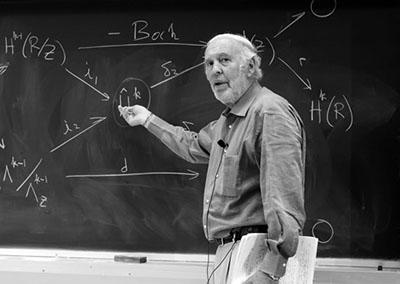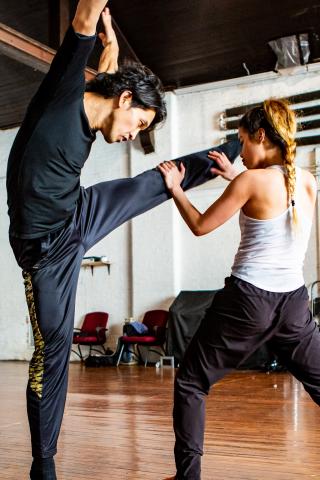2019 Festival: How a Dance Gets Built
BARKIN/SELISSEN PROJECT presents Dance of the Diagram at the National Math Festival on Saturday, May 4, 2019 at 2:00 pm. Seats are first-come, first-served. You can register for this free performance on Eventbrite (opens new window) to let us know you are coming, and to receive reminders about the performance. Learn more in this blog post by Kyla Barkin.
How a Dance Gets Built
When transforming Dance of the Diagram from a mathematical theory into a dance performance, we as choreographers first did preliminary work on a structure and base of movement or “source” material before the dancers joined us in the studio.
Eventually dancers came in to learn about the piece, each other, and the base material as we embarked on a process of choreographic development in sections. We took the base phrases, or short sequences of movement, and fleshed them out into longer variations including duets, trios, and other combinations, then arranged the completed sections and transitions between them. Finally, we worked on performance quality and practicing the final product. This took quite a while since some things need a lot of time and repetition.
We have a tendency to create choreography with intricate and often risky partnering. It takes time and a lot of trial and error for the dancers to develop the strength, coordination, consistency, and trust needed to perform smoothly before adding the finishing touches. Once everything was created and arranged, we “cleaned” and “fixed,” which makes the choreographic intention clear to the viewers’ eyes, as well as keeps the dancers functioning safely and consistently. These are very important steps needed for building and learning a dance in order to be able to put more focus on the art of performance than on technical execution.
Different parts of the choreographic and rehearsal process can take different periods of time, depending on the specifics; however, some things can be accelerated by studying video and making corrections and/or decisions for the following days. Usually, for a piece of this size (10 dancers & 36 minutes), we will spend at least a few months of rehearsing approximately 12 hours per week to prepare for a performance.
Rehearsals are often 3-6 hours long because we need to allow time for a thorough warm-up, a few breaks, and a cool-down period. Just to give an idea, solving one challenge can take anywhere from five minutes to several hours, depending on what it is and how many bodies are involved in the issue at hand. Once a piece of significant size and length such as Dance of the Diagram is created, learned, and ready to be rehearsed, it takes about three hours to run through it and work on the notes. We can usually aim to do that twice per rehearsal toward the end of a process, which ensures the stamina needed for an adrenalized performance.
Learn more in Part 1: Creating and Rehearsing Dance of the Diagram!

Kyla Barkin is co-founder and choreographer of the BARKIN/SELISSEN PROJECT.


